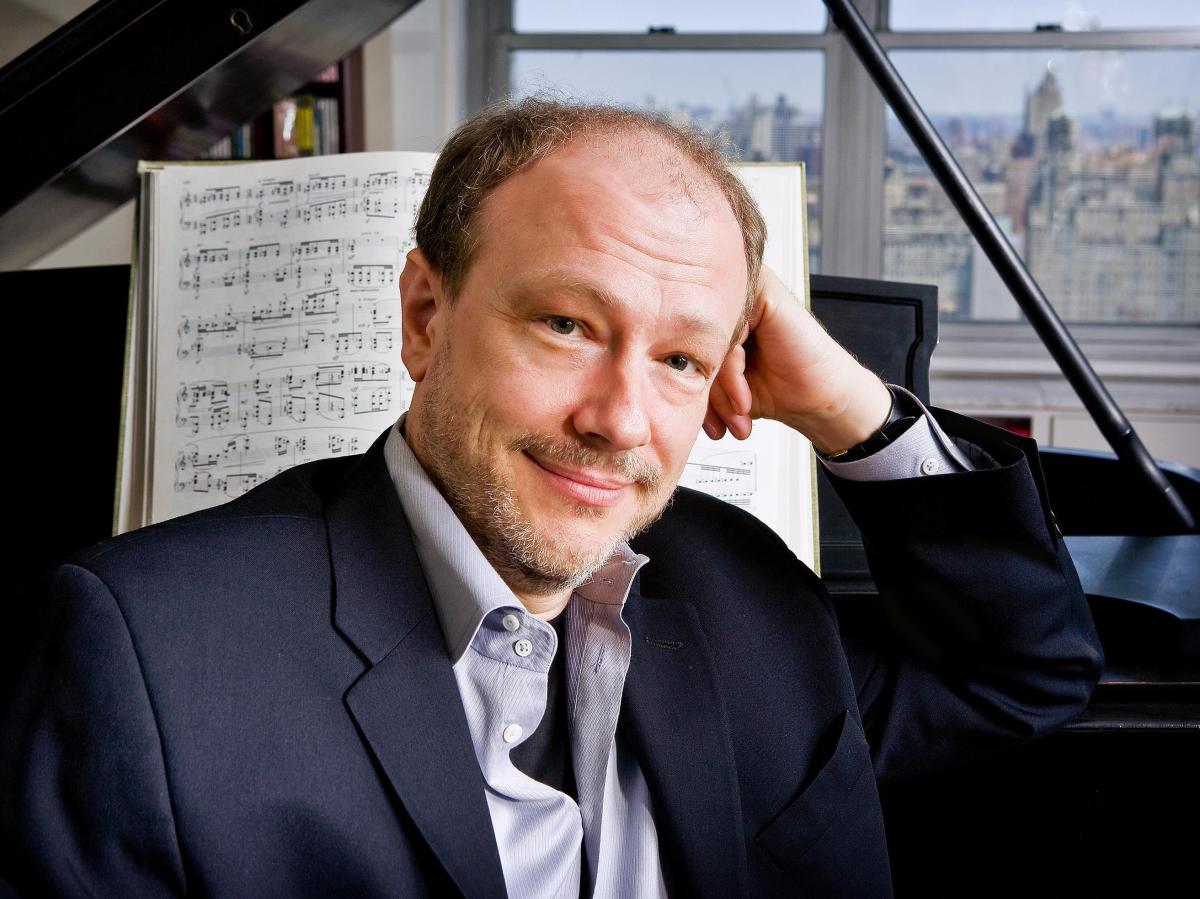It was indeed ‘all Beethoven’ for internationally acclaimed pianist Marc-Andre Hamelin’s time with the Melbourne Symphony Orchestra this past week.
First was the concert, Soloist’s Choice, in which Hamelin played two Beethoven sonatas (Op.109 and Op.110) and then the great composer’s Quintet for Piano and Winds, with artists from the MSO: Jeffrey Crellin, oboe, Philip Arkinstall, clarinet, Elise Millman, bassoon, and Geoff Lierse, horn.
It was good to see these members of the orchestra given greater prominence, as an increasing number have in the series Wilma & Friends (with the orchestra’s concertmaster Wilma Smith). All are soloist material, but even great symphonies give only limited opportunity for their performance to be acknowledged.
The orchestra for the all-Beethoven program a few days later was dominated by strings, with a good complement of winds, one percussionist and only as many brass players as needed to give depth to the sound. The first item, Coriolan: Overture, Op.62, with an indirect connection to Shakespeare’s Coriolanus, and certainly had all the drama you’d expect, starting with a series of emphatic chords.
The work was like program music, full of light and shade, if not conjuring up specific images. Speed and strength suggested the Roman hero but there were moments of quiet in the symphonic-style development, with a few last staccato chords giving way to a hushed ending.
If that came as a surprise, so did the opening movement of the next work, Beethoven’s Symphony No.1 in C, Op.21. It began with three cadences – and it was an adagio, only giving place to allegro after some exploration of the first theme. Winds, particularly the oboe, were important to the development before the strings (seated either side of the conductor) ended the movement with a flourish.
Andante is the expected tempo for second movements in Classical symphonies, and so this one brought no surprises. Conductor Bernard Labadie almost swayed to the sound as he drew a ‘singing’ sound from the orchestra, true to Beethoven’s directions and his own understanding of phrasing. The third movement was a minuet but felt more like a gallop. In an interesting section, the winds and some brass took the lead while the upper strings successfully carried off some very fast scales that seemed to be entirely for show!
The ending of this challenging movement was in synch, but the first note of the last was not – one of the few tiny flaws in the performance. Labadie and the orchestra recovered quickly, in time for the shift to ‘Allegro molto e vivace’ that would carry the symphony to a successful end.
It was a happy thought to program Beethoven’s first symphony (written around 1800) with the last of his five piano concertos, composed ten years later when Beethoven’s deafness was so debilitating that he was unable to perform it himself. However, the work seemed intended for a virtuosic pianist, with the solo instrument more than matching the orchestra in its challenges.
Program notes by Gordon Kerry rightly refer to a ‘kind of musical argument and drama’ beginning with the orchestra’s strong opening chord, followed immediately by the first of the piano’s long, brilliant expositions. If there was a slight hesitancy in that chord, Hamelin dashed off the piano part with complete confidence.
When the orchestra joined in for an extended development of the theme, Labadie kept the balance steady, allowing for the moving contrasts and, at times, spectacular crescendos of the work. If his first symphony was a little immature, this concerto showed Beethoven at his most confident, with sensitivity and deep feeling mixed with sheer brilliance.
Of course Hamelin’s performance was central to this realisation. Those who had heard his earlier concert, mostly a recital, were more than confident that the All-Beethoven program with the full orchestra would be a great success. Hamelin has a wide repertoire (including his own compositions) but has the empathy, brilliant technique and sheer strength needed to play Beethoven.
In a work that simply swept the listener along with it, there were some highlights: the ease with which Hamelin delivered chromatic scales, arpeggios and other technical challenges, the beauty of the second movement, Adagio, particularly a series of trills after which the piano’s lilting sound was accompanied by pizzicato strings.
Famously, the almost tentative lead-in to the final movement, Rondo, gave way to a rollicking dance for all players, in which their ‘competition’ reached its height. Much of the movement appears to be a (scored) cadenza, such is its brilliance in the hands of a pianist such as Hamelin, and a conductor like Labadie drawing the very best from the orchestra.
Stirring stuff, which had the orchestra joining in the applause for the pianist until he was persuaded to play an encore – rather cheekily, Chopin’s Minute Waltz.
Rating: 4 ½ stars out of 5
All-Beethoven ProgramMelbourne Symphony Orchestra
Bernard Labadie – conductor
Marc-Andre Hamelin – piano
Beethoven – Coriolan: Overture
Beethoven – Symphony No.1
Beethoven – Piano Concerto No.5 Emperor
Hamer Hall, Melbourne
September 30
Photo: Marc-Andre Hamelin by Fran Kaufman






